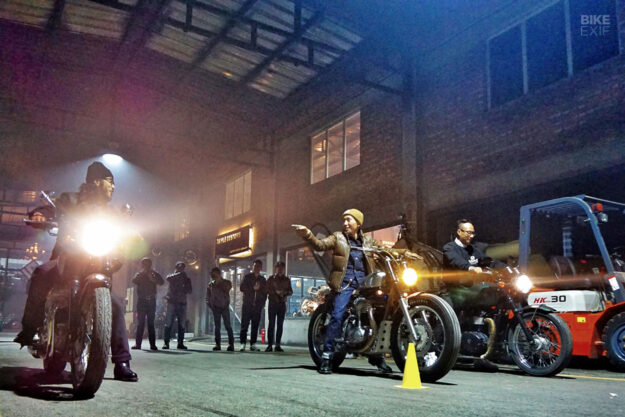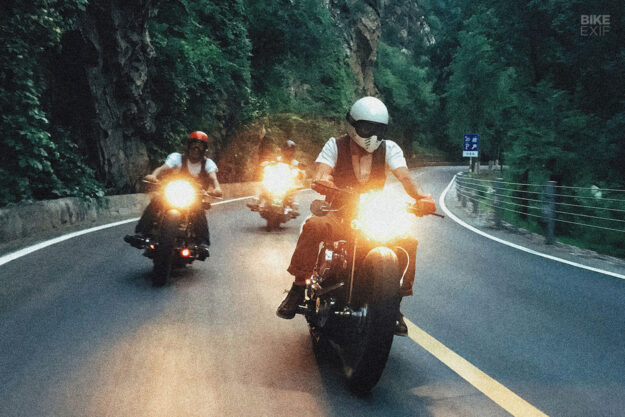
Miki is 26 years old, compact in size, but rides with a confident, easy strength. Her crew blasts around Beijing on near identical Zero Engineering Type 6 motorcycles; 92.63 cubic-inch S&S Shovelheads with Baker six-speeds.
The geometry of the Type 6 works for smaller riders like Miki. A rigid Gooseneck frame with a 33.2-degree rake drops the frame four inches from the street, and a mere 26 inches from seat to street. The classic Zero design Springer front end and larger 5.00-16 tires harken to a nostalgic past, while the bike’s modernized, long wheelbase and narrow width works wonders for squeaking through the old, narrow alleyways of Beijing.
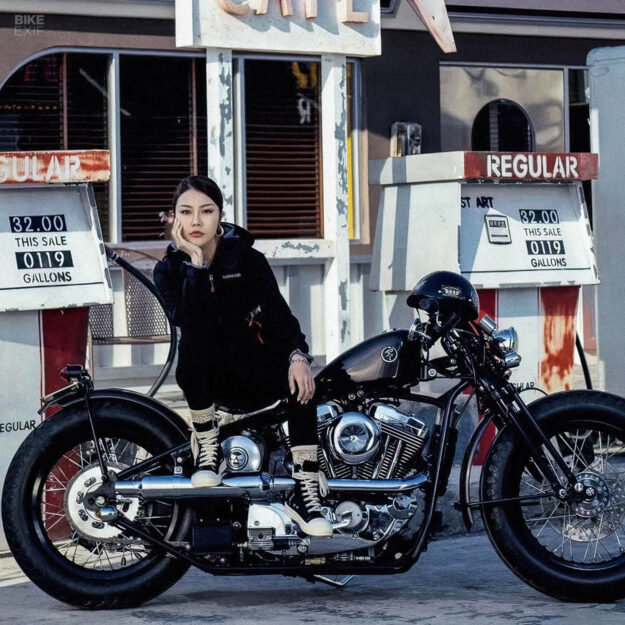
Life today in Beijing changes in unpredictable ways for young creative people like Miki. They must find their footing and pivot skillfully between past and present cultural and historical narratives. For Miki and her friends, riding their Zero motorcycles through the city and beyond is a way to channel the old and new.
“Motorcycles can help young people in China find a creative life,” Miki says to me through the modern marvel of Google Translate. “I live and work in Beijing. I am a make-up artist for fashion, video, and movies. There is a group of young people like me who also lead creative lives and we ride together.”

“My tattoo artist friend, Zhou Xiaodong (AKA: Dong Dong) is an example. I live downtown in the second ring road Dong Cheng district where everything is the traditional chuantong open courtyard-style. Everything looks a thousand years old. It was affordable here ten years ago, but now it’s difficult.”
“We work and then we meet up, ride and relax,” Miki continues. “I have been riding a motorcycle for ten years, and I have ridden other brands and models. I have never found what I like in my heart. I felt something was wrong, until I found my Zero.”
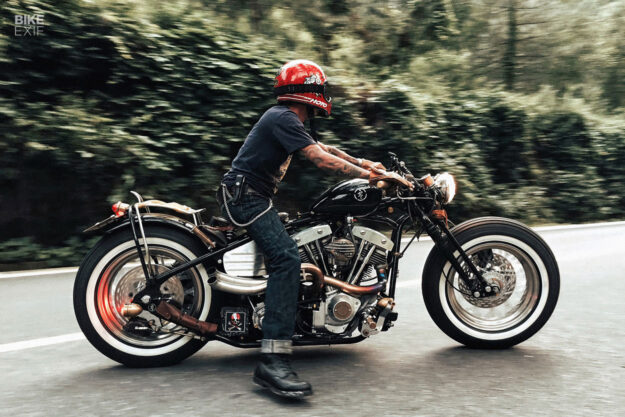
Just 15 years ago, Miki, Dong Dong and their Zero group would have ridden the streets with millions of others on a bicycle. Now the city is divided into the old and new, where glitzy Euro and American cars and fashionable motorcycles dominate. The flow of traffic in Miki’s more traditional Dong Cheng area is still calm and predictable, and it’s fun for them to ride through that history.
Beijing is 6,300 square miles—20 times the size of New York City and 12 times the size of Los Angeles—with more than 21 million people. The Forbidden City sits in the center surrounded with concentric ring roads that move out 78 miles to the mountains and the Jinshanling section of the Great Wall that has stood since 1570 CE.

The Wall meanders like a dragon’s tail for 1300 miles across the semi-arid landscape and serves as a primary not-so-subtle reminder of historical continuity. But for young urbanites like Miki and her riding friends, the Wall is an ambiguous, controlling, mixed-metaphor of the past.
The Chinese economy took off during the early 2000s with breakneck 12% growth. Miki, Dong Dong and their friends had to work creatively to be a part of that opportunity. Chinese society was closed off from the rest of the world by government filters, however young people like Miki figured out how to use proxy servers to navigate on the Web and see what other young people were doing, opening them up to worlds of fashion, consumerism, current trends, styles, and a new sense of self found through motorcycles.
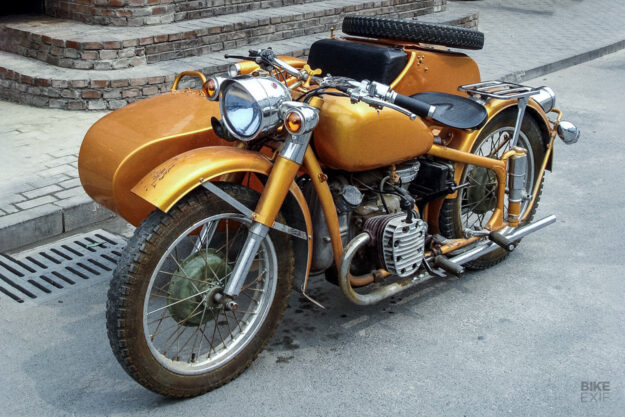
If you ride in Beijing, most brands are represented on the street, from aggressive, flashy-paint speed machines to upscale European and American brands. From the 1930s through 1949, the Nationalist Chinese Kuomintang Army rode Indian Motorcycles, but sighting one of those today is unlikely. The Chang Jiang side car bike had a military history in early Communist China.
Today there are stories about warehouses full of dusty, abandoned Chang Jiangs from the 1950s, 60s, and 70s. The bikes are not allowed in many areas because of air quality regulations but they are seen on outer ring Beijing streets. Trendy younger kids sneak them on to the lower ring roads and it’s common to hear their boxer opposing-twin 750 engines chugging and blowing smoke on warm summer weekend nights.
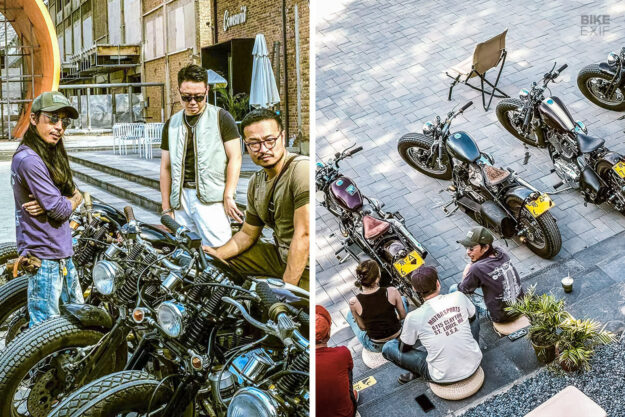
Miki describes her day-to-day riding with friends: “We ride to Gui Jie (Ghost Street), the restaurant street, at night,” Miki continues. “There are 100 restaurants in the darkness. On warm nights we sit for hours next to our bikes and eat. It is called table culture, or ‘Ni chi le ma?’ roughly translated to ‘Did you eat?’”
“Everything focuses on the food, the table where you eat, and your style of eating: courtesy, endless toasting, the angle you hold your glass and at what level when you toast. Slow, easy conversation. No rush. Enjoying the food and company of friends. Life in this section of Beijing is gentle and quiet. Everything works together.”
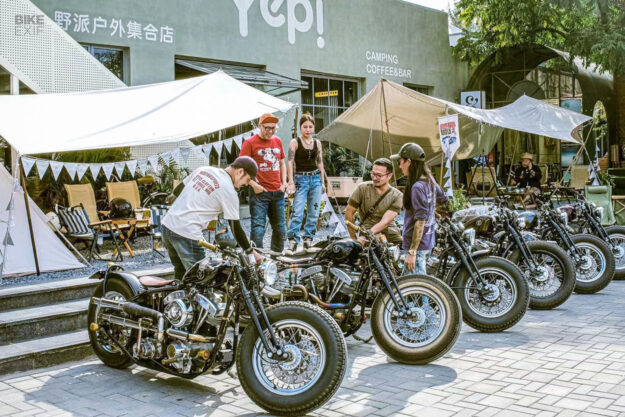
Chinese culture can be a brutal, dictatorial arrangement for a young person like Miki. History and protocol are guides but also suffocators. Gender, social position, and family connections go both ways. Xiao Shun or Filial Piety stresses the Confucian doctrine of respect for parents and ancestors.
This attitude is particularly demanding of women. Miki risks blow-back from her marriage-obsessed parents, her relatives, neighbors, and colleagues for riding a motorcycle—especially with male friends. She negates tradition and authority but it’s not an easy move. Her shoulders are conspicuously tattooed and this drives home her point about self-determination while also finessing the culture.
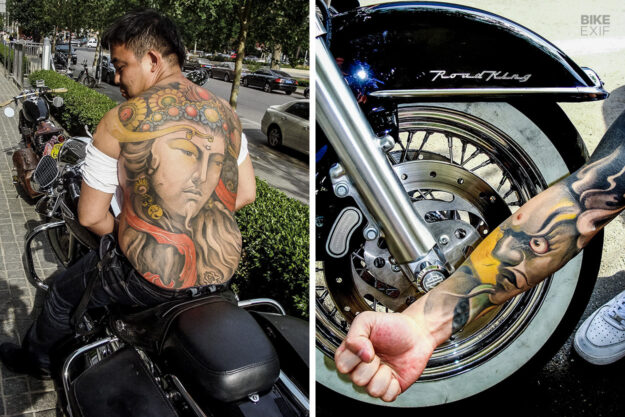
“Tattoos have other meanings to me,” Miki says. “And they all have stories! Live hard, live for yourself. Accept the true self and don’t compare yourself with others. Everyone is unique and must love themselves, find their own advantages, and do what they are good at.”
“For me, motorcycles are my family members,” Miki clarifies. “They are a part of my life—a pursuit of a source of freedom. Yes, it is fun to ride in Beijing but there is something serious too.”
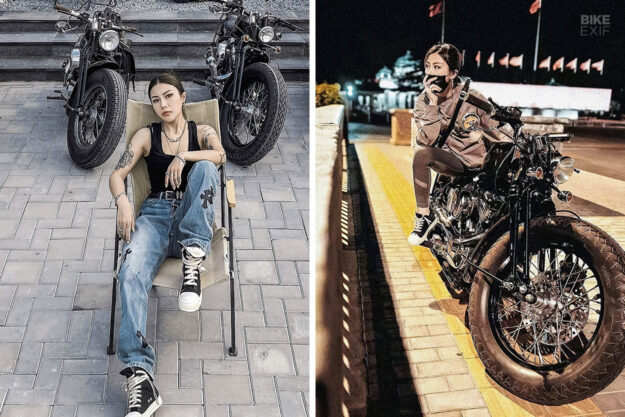
“My generation stands in the middle between the past and now; very different worlds we go through when we ride. If I am to be strong and become an artist, it will be from my own efforts and pursuit of beautiful things. This is how I must live and my motorcycle helps me understand and do this.”
Words by Michael McCabe | Images by Xiaoshu, Zhang Yang, & Michael McCabe | This article first appeared on Iron & Air, and has been edited for length.
